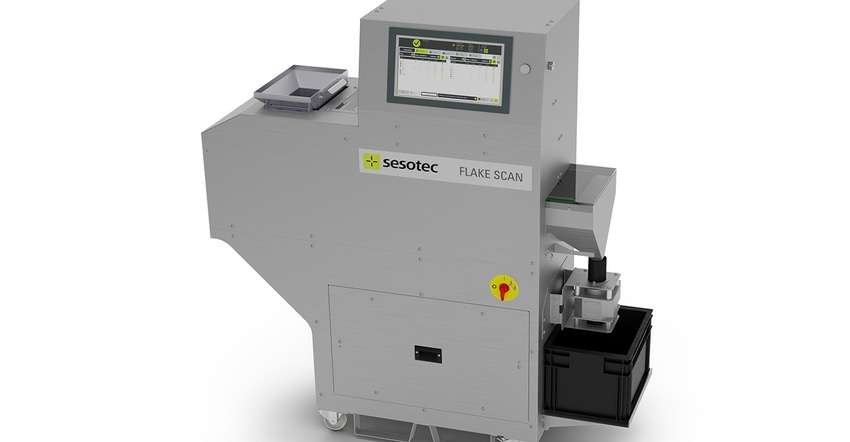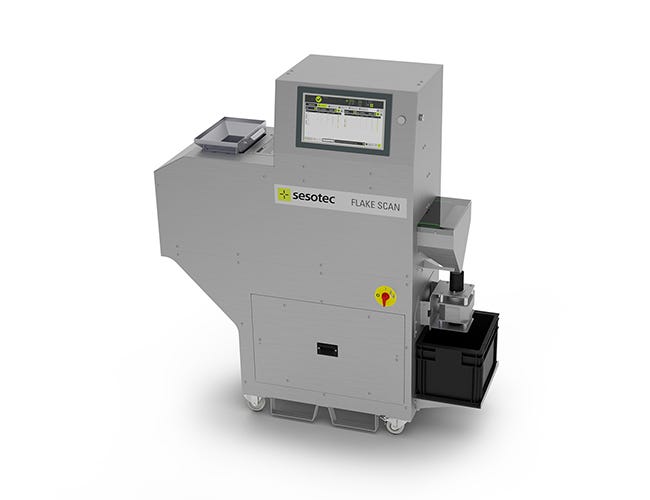The Flake Scan analysis system from Sesotec GmbH captures data that can be quickly leveraged to determine the purity of plastic flakes and regrind.
August 17, 2020

The quality of plastic flakes and regrind is crucial in determining whether plastics processors and manufacturers can profitably use and sell plastic recyclate. Depending on how the recyclate will be used, elaborate manual, visual, or thermal sample analyses are often necessary in order to assess the quality of a batch of materials. Sample analyses are also used as a means of evaluating the effectiveness of the recycling sorting process. Such sample analyses are hardly representative, however, and require additional resources, cost, and time.
|
The Flake Scan analysis system can reliably determine the quality of plastic flakes and regrind in a matter of minutes. Image courtesy Sesotec GmbH. |
Sesotec GmbH, a manufacturer of contaminant detection and material sorting technologies in Schönberg, Germany, recently developed Flake Scan to help reduce the effort involved in various analysis techniques for recyclate. In just a few minutes, the device reportedly can reliably determine the precise quality of plastic flakes and regrind. The Flake Scan analysis system delivers data that can be quickly leveraged to make decisions about whether plastic flakes and regrind are pure enough for profitable use. It can also provide insights into the effectiveness of an entire recycling process and help ensure that individual plant components are functioning effectively.
An array of color, near infrared, and metal sensors automatically provides precise, reproducible analyses of material samples by detecting color errors, plastic types, and metallic contaminants. The composition of each batch of plastic flakes can be determined within minutes. Representative results can be reached with a sample volume as small as eight liters. At maximum throughput, Flake Scan can analyze up to 20 kilograms per hour. The device also offers easy operation, with an intuitive touchscreen as well as automated reporting and archiving.
About the Author(s)
You May Also Like





